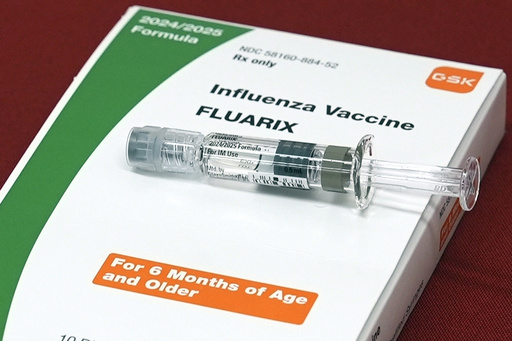
NEW YORK – The winter virus season in the U.S. is currently at a peak intensity not seen in the last 15 years, according to reports. A significant indicator of flu activity, which is the percentage of doctor visits attributed to flu-like symptoms, shows that last week’s figures surpassed any winter flu season since the 2009-2010 outbreak of swine flu. This data was released by the Centers for Disease Control and Prevention (CDC) on Friday.
It’s important to note that other viral illnesses can exhibit symptoms similar to the flu. Nevertheless, hospital data and modeling by the CDC indicate that COVID-19 cases are declining. Additionally, evidence suggests that cases of RSV (respiratory syncytial virus) are also decreasing across the nation.
The impact of the flu has been significant enough to result in school closures in various states. For instance, the Godley Independent School District in Texas, serving approximately 3,200 students, suspended classes for three days last week due to a notable number of absences—650 students and 60 staff members were out one day. A spokesperson from the district, Jeff Meador, mentioned that most illnesses reported are attributed to the flu, with some cases of strep throat, calling it one of the worst flu seasons he can recall.
According to current estimates from the CDC, there have been at least 24 million cases of flu this season, leading to approximately 310,000 hospitalizations and 13,000 deaths, including at least 57 among children. Historically, the flu season generally peaks around February.
Overall, last week, 43 states reported either high or very high levels of flu activity, predominantly affecting the Southern, Southwestern, and Western regions of the United States. In Rochester, New York, Dr. Elizabeth Murray, a pediatric emergency medicine doctor, noted that while the flu season has been severe, it does not appear to be more intense than previous years. She pointed out that numerous respiratory illnesses are prevalent, with a notable presence of both RSV and COVID-19 cases among infants.
Due to a directive from the previous administration, the CDC has not permitted reporters to interview flu experts about the latest trends. A spokesperson from the CDC acknowledged the newly released figures illustrate the highest level of flu-like illness compared to past years, although the data is complicated by the fact that the baseline for doctor visits is recalibrated each year. Just last January, the CDC described the flu season as being of “moderate” severity.
Health officials recommend that everyone aged six months and older receive an annual flu shot. About 44% of adults have obtained flu vaccinations this winter, which matches the previous winter’s figures. However, the vaccination rate for children has dropped to around 45%, down from the usual 50%, as indicated by CDC statistics.
Currently, approximately 23% of adults in the U.S. are up to date on their COVID-19 vaccinations, an increase from roughly 20% at the same time last year. Vaccination rates among children mirror this trend, standing at about 12%. The government has yet to release assessments on the efficacy of this season’s flu vaccine.
Current testing results reveal that two strains of the seasonal flu, specifically Type A H1N1 and Type A H3N2, are responsible for most illnesses. Health officials are monitoring a third strain, Type A H5N1—commonly known as bird flu—that has adversely impacted millions of animals but has only been confirmed in 67 individuals in the U.S.
To minimize the risk of contracting seasonal viruses, medical professionals advise against touching the face, particularly the eyes, nose, and mouth, as germs can transfer through these actions. It is also recommended to wash hands regularly with soap and water, sanitize frequently touched surfaces, and maintain distance from those who are ill.

